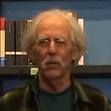Beyond The Visible Thursday IU Cinema Extra
Four years before Wassily Kandinsky painted his first abstract canvas, Swedish artist Hilma af Klint painted the first abstract canvas. Until recently, her contributions have been forgotten, overshadowed by narratives of male genius. In BEYOND THE VISIBLE, the story of af Klint’s own genius receives the spotlight it deserves. Inspired by science and spiritualism, af Klint created an astonishing body of work rich in symbolism and meaning; her brilliance has been compared with that of Leonardo da Vinci. Halina Dyrschka’s fascinating documentary investigates how this exceptional woman was erased from art history and makes the case that it’s finally time for that history to be rewritten. In Swedish, English, and German with English subtitles. (IU Cinema blurb)
This was one not in the Indiana University Cinema catalog for spring semester, but rather added at the semi-last minute (cf., e.g., the black and white version of PARASITE, February 20), and a very interesting film for me. As a writer and poet, I’m presumably some kind of artist myself, so I have a professional need, if one will, to know how other artists do their thing. Painters. Musicians. What is abstract art anyway, for instance? So, home from the film I feel possibly more inspired than enlightened, but in some [image error]way I think it spoke to me — it’s presumably one way of finding one’s place in the world. Or maybe trying to “see” what the world is? That is, it’s powered not just by aesthetics — some of af Klint’s work may be visually beautiful, but that’s not the point. Or if symbolism (in part anyway), symbolism of what?
Some may come down to zeitgeist, the spirit of the time: if af Klint was the first, Kandinsky and others were working along the same lines and ultimately with similar results, and they seem to have been working independently (e.g., it’s possible Kandinsky may have met or seen something by af Klint, but she wasn’t selling or generally displaying her work so it seems unlikely). But both, along with other pioneer abstract artists, were into spiritualism to some degree — a popular belief in the early 1900s — while elsewhere scientists were discovering such things as atoms, and theories of relativity. Things you can’t really see with your eyes, but now understood to be a basic part of reality. So how do you express something like that?
As I say, I don’t think the film gave an answer as such, but it may have given some insight into how a particular artist searched for it. And so, for me, maybe some hints for my own search.



